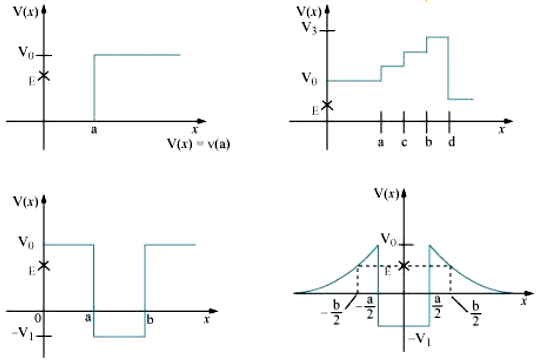Question 6.3:
Given in Fig. 6.11 are examples of some potential energy functions in one dimension. The total energy of the particle is indicated by a cross on the ordinate axis. In each case, specify the regions, if any, in which the particle cannot be found for the given energy. Also, indicate the minimum total energy the particle must have in each case. Think of simple physical contexts for which these potential energy shapes are relevant.

We know that total energy, E = K.E. + P.E.
Or, K.E. = E – P.E.
Kinetic energy can not be negative. The object can not exist in the region, where its K.E. would become negative.
(a) In the region between x = 0 and x = a, potential energy is zero. So, kinetic energy is positive. In the region x,> a the potential energy has a value greater than E. So, kinetic energy will be negative in this region. Thus the particle cannot be present in the region x > a.
The minimum total energy that the particle can have in this case is zero.
(b) Here P.E. > E, the total energy of the object and as such the kinetic energy of the object would be negative. Thus objects cannot be present in any region of the graph.
(c) Here x = 0 to x = a and x > b, the P.E. is more than E, so K.E. is negative. The particle can not exist in these portions.
(d) The object can not exist in the region between x = -b/2 to x =-a/2 and x = -a/2 to x = -b/2 .Because in this region P.E. > E.

© 2025 GoodEd Technologies Pvt. Ltd.